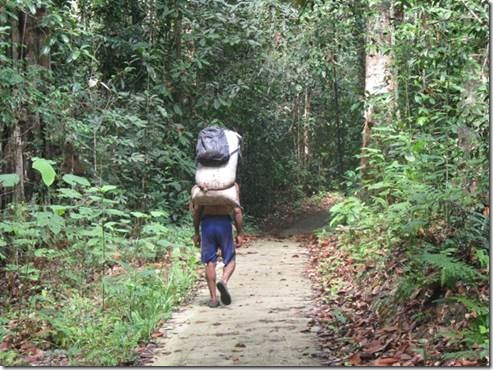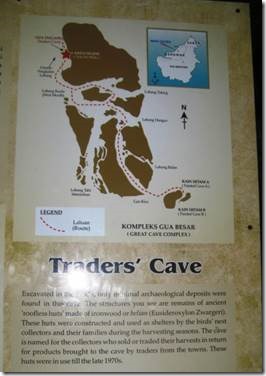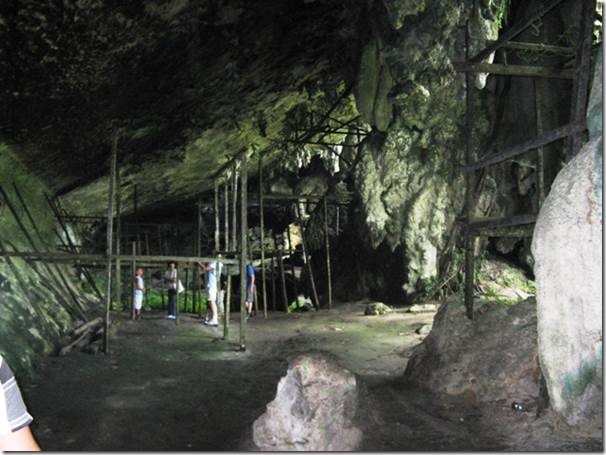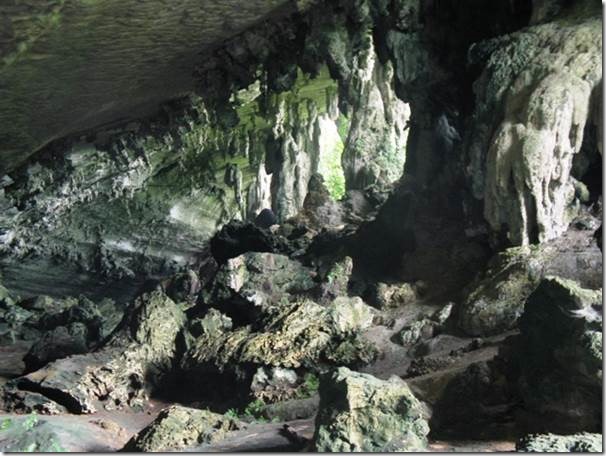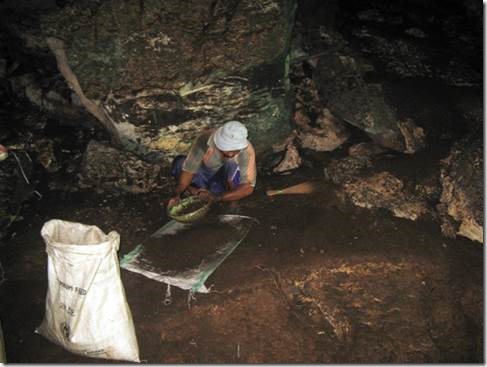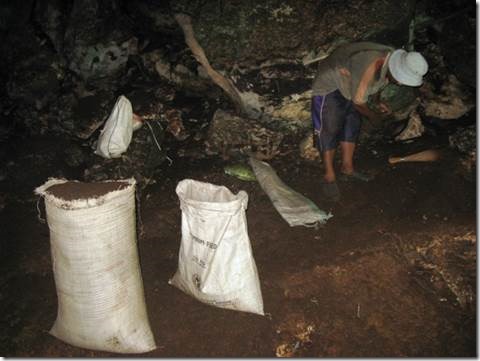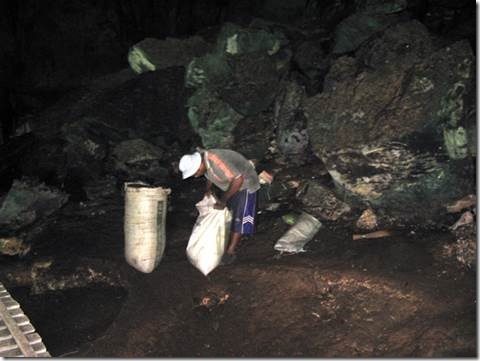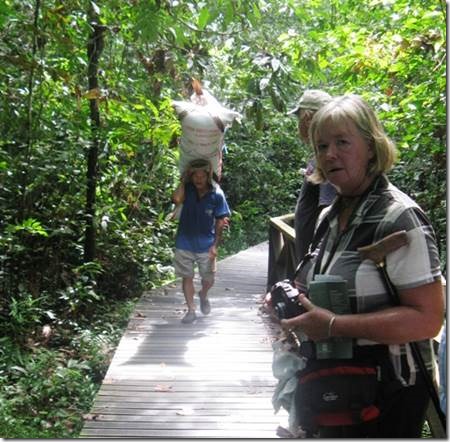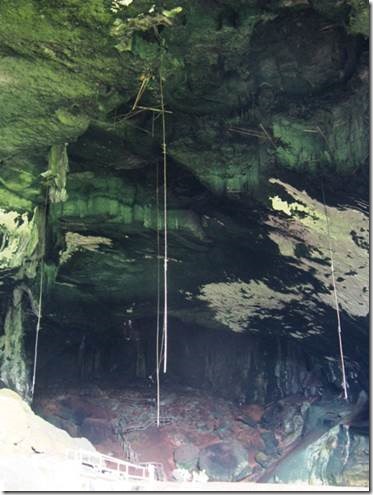|
Hi All, Today we biked to customs and immigration to check out of Malaysia to prepare for tomorrow’s departure for Brunei. We will spend 3 days in Brunei as part of Sail Malaysia; the 25th -27th. We still haven’t planned our route to Brunei but it will probably be straight through so will be an overnight passage. Our time there is pretty crammed full of events. Last night we had a Rally dinner and tonight we will have one tonight also. It’s funny, although we like Miri and would come again, we have done little touring around other than the Niah Caves and biking through town to do boat chores. I never did make it back to spend more time at the library. Next visit. So, here’s the last of the Niah Cave trip emails. Maybe more than you wanted to know? Ru
Niah Cave with Jim and Joy Carey – Traders Cave and the Guano Carriers On our way to the caves we passed this fellow. We weren’t quite sure how to connect him to the area until we read about the Trader’s Cave and saw another man actually filling bags in the caves. Buyers and sellers met at the Traders’ Cave. Traders’ Cave Rock formations in Traders’ Cave I don’t know if all of the rock hanging from the ceiling can be called stalactites. In the first email I wrote that the Park brochure calls this an overhang rather than a cave. Not sure the difference although this one had more opening. The bird’s nests and guano are collected in the Great Cave. “Proceeding into the cave, the sound of disembodied voices mingle with the squeaking of millions of bats and swiftlets to create an eerie atmosphere. The voices belong to the guano collectors who toil by the light of paraffin lamps to collect the guano (bat and bird excrement) covering the cave floor. The guano is then carried in sacks to the Sungai Niah (Niah River) where it is graded and sold as fertilizer. “Park brochure Guano makes one reluctant to hold onto the railings! That and scorpions and giant crickets that also pinch. I spent as much time on the way back shining my light on the rail as on the stairs. But mostly you just ignore it all and walk through the caves just looking around amazed at the geologic structures carved into the walls and ceilings. A guano collector. Sifting? Another guano collector. I think we saw three in all. We have no idea how much those bags weigh. Birds’ Nest Collecting Bamboo poles used to collect the birds’ nests. But we never saw the birds’ nest collectors. They climb these bamboo poles attached to the roof of the cave and collect the nest of the swifts. We’re not sure how high up they are thought the cave entrance is over 60 meters high. It is much higher than our sail mast and I won’t go up there and neither will Randal. (At least not until we get a boson’s chair.) “Strategically positioned bamboo poles and ladders made from ironwood are evidence of the birds’ nest collectors, local people who have practiced this dangerous occupation for generations. The half million swiftlets that live in the cave make their nests purely form their own salivary secretions and when the nests are cleaned and cooked they produce the famous birds’ nest soup which is highly regarded in Chinese cuisine and in the West. Collecting the nests from the cave ceiling is a dangerous job and fatalities are not uncommon. ….Obviously such a valuable commodity is a magnet for poachers and over-harvesting is a constant worry. Therefore Park management constantly monitors the caves to deter illegal collectors.” Park brochure (When we first learned about the swifts and birds’ nest soup I was told that you can take the first 2 nests the bird builds and it will rebuild each time. But if you take it three times it will stop. I don’t know if that means stop permanently or the bird will just move to some other site.) I would think I’d be put off knowing the main ingredient of bird’s nest soup is swiftlet saliva even if the soup were free for the tasting. Yuck. I draw the line at chicken feet, cow tongue and chittlins (sp) which are pig intestines which I actually did eat once in a Southside restaurant in Chicago back in 1970. I think I could easily become a vegetarian. |

